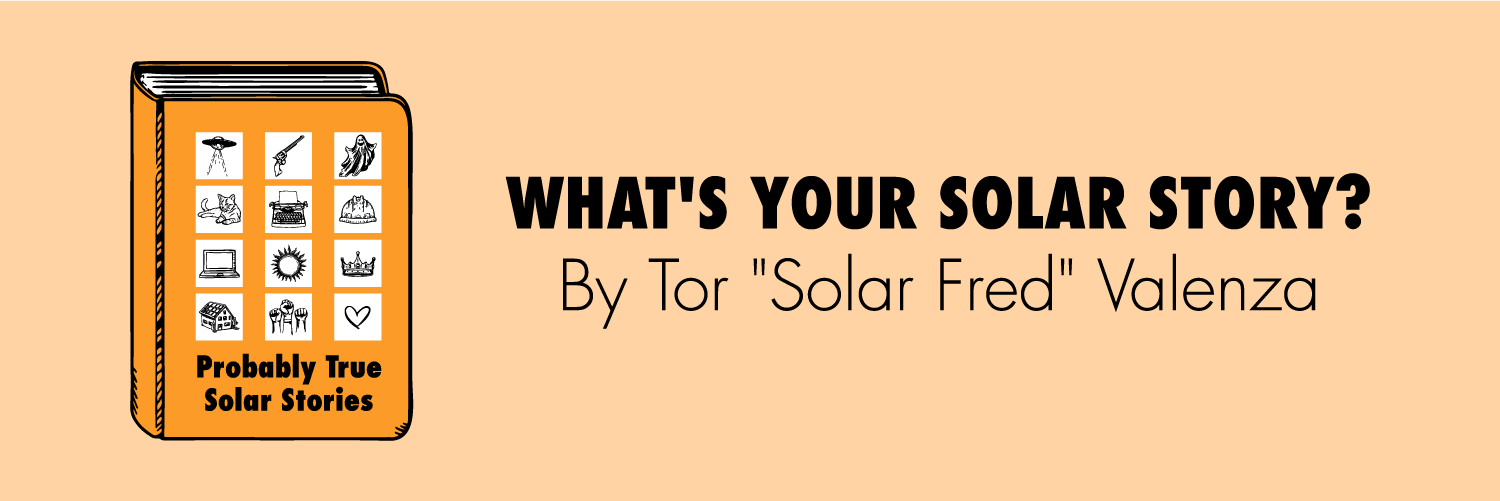Part 3: The Solar Heist, or How I Got into the Solar Business: The Favor
In the next episode of Probably True Solar Stories, we continue the story of two neighbors who are part of the solar industry. Charlie is a large-scale utility solar developer while Mazz is a medium-scale thief who successfully "liberated" Charlie's solar panel shipment from a U.S. customs warehouse in Part 1 and Part 2.
Now, in Part 3, it's a year later. Mazz has invested in a home solar company and trying to go legit. Meanwhile, Charlie's big solar project is almost complete... but there's a complication. Somebody knows about the solar panel heist. And that somebody now wants a favor that Charlie and Mazz can't refuse.
True Solar Takeaways
- With the passage of the IRA (Inflation Reduction Act of 2022), all solar projects, regardless of size, receive a 30% Investment Tax Credit (ITC).
- Solar projects that are built on landfills, brownfields, and EPA superfund sites receive an extra 10% bonus ITC. There are other ITC bonuses that could net the solar owner as much as 70%.
- The solar industry is filled with acronyms and jargon.
- AHJ (Authorities Having Jurisdiction) are the permitting authorities that review and approve the building of solar projects
- PTO (Permission to Operate) is the official utility permission to start generating solar power on the utility's grid.
- PUC (or in California, the CPUC) stands for Public Utility Commission. The PUC regulates utilities and approves or modifies utility rates and sets policies for a state's public utilities.
- 20% efficient solar panels are considered high efficiency and cost more. Efficiency means that solar panel converts 20% of the sunlight that hits it into electricity. That means that 80% of the power gets reflected. So, the higher the efficiency, the more solar you'll generate with fewer panels. High-efficiency panels are more expensive than panels in the 17% range, but they produce more energy on small rooftops and reduce the number of panels needed.
- Single Axis Trackers (SATs) are used in most large solar projects today. Like high-efficiency panels, they're more expensive than fixed-tilt racks. But because they automatically track the sun throughout the day, they generate more power.
- Solar project owners are paid by utilities for every kilowatt-hour (kWh) generated by the solar farm. So their goal is to keep projects online and pumping out as much solar in a day for 30 years or longer. There are maintenance costs, but if a project is well maintained, it's a very steady revenue stream. That's why they often use trackers with high-efficiency solar panels. So, even a tiny boost of 2% efficiency can generate more power--and more profits over a 30-year contract.
- Solar project owners don't always own the land. Landowners ofte
-----
- Visit ProbablyTrueSolar.com to sign up for the newsletter to learn about new episodes and live solar storytelling events.
- Support the show by visiting the merch store and buying a tee shirt!
- Learn how sponsors can be a part of Probably True Solar Stories and tell their own creative stories.
- Follow @SolarFred and/or @ProbTrueSolar on Twitter to discuss episodes
- Don't forget to:
- Subscribe to the show on your favorite podcast streaming service
- Rate
- Review, and
- Share!















